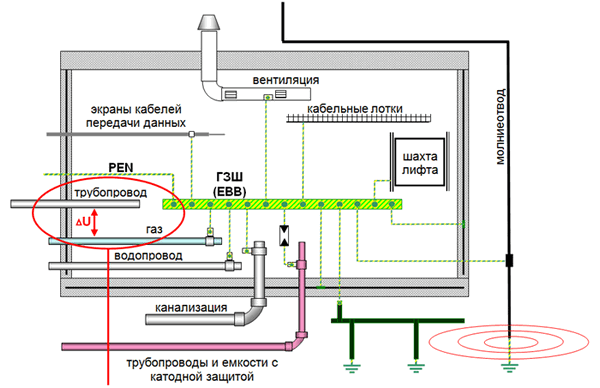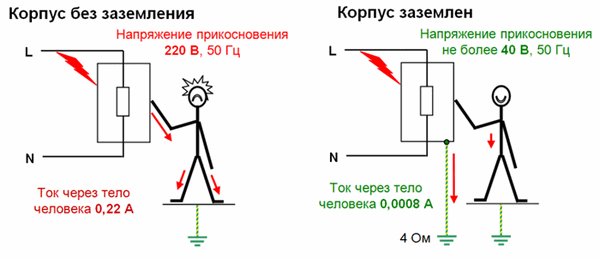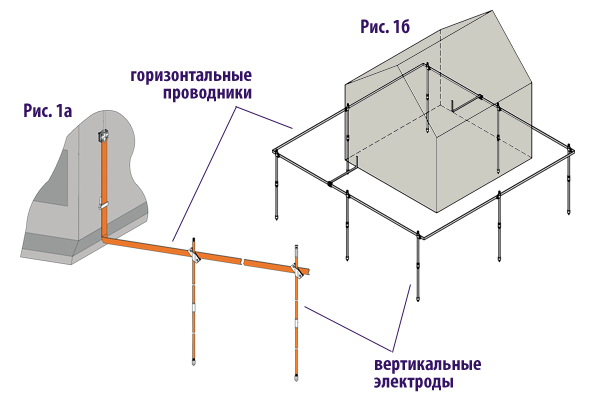Заземление в физике — как это работает и почему это важно?
Electricity is an indispensable factor in modern life, and though the major kinds of fuels humankind uses to produce it are a source of great concern, electricity itself will be required for as long as civilization in its present form persists. At the same time, among the first safety facts virtually every child is taught is that electricity is, or can be, extremely dangerous.
Furthermore, the electricity that humans generate and can therefore control to a great extent is only part of the story here. The phenomenon of lightning is also familiar to very young children, and it is simultaneously a source of awe and concern even to grown-ups. But its «strikes» at Earth level are almost as unpredictable as they are potentially deadly, and a close look at the add-ons to buildings and other structures around the globe underscores the urgency of this safety consideration.
Electric grounding, also called earthing, provides a path for current to flow into the ground and excess electric charge to disperse instead of building up and creating a potential hazard. This works because Earth, being electrically neutral but also enormous, can both accept and provide large numbers of electrons (by human-industry standards) without noticeable changes to this «zero voltage» state.
Charge, Voltage and Current Flow
Electric charge in physics is measured in coulombs. The elementary (indivisible) charge is that on a single electron (e-) or proton, with a magnitude of 1.60 10-19 C and given a negative sign for electrons. The separation of oppositely charged particles creates a voltage, or electrical potential difference, that is measured in joules per coulomb (J/C) and induces electrons to flow in the direction of a net positive charge, a movement called electric current.
- Electrons «want» to flow toward a positive terminal or other area of net positive voltage for the same essential reason water «wants» to flow downhill: a potential difference, but established by the electrical force instead of the force of gravity.
This flow of electrons, measured in C/s or amperes («amps»), only occurs if the path between the sources of voltage is a conductor and readily permits current flow, like most metals. Non-conducting materials are called insulators, and they include plastic, wood and rubber (an abundance of insulators among everyday products is plainly a good thing). In the previous analogy, a dam holding back the natural flow of river current is like an insulator, or dielectric.
All materials, even good conductors, have some electrical resistance, denoted R and measured in ohms (Ω). This quantity allows for a formal relationship between voltage and current flow, called Ohm’s law:
I=\frac{V}{R}
How Does Grounding Work?
Electric current is defined as flowing from higher potential to lower potential (which is the same result as electrons flowing in a negative-to-positive direction –
Будьте внимательны и не путайте этот момент!) при условии, что существует подходящий путь между ними. Когда два вывода батареи соединены проводом, например, ток свободно протекает в контуре с минимальным сопротивлением.


However, if there are no highly conductive paths connecting a potential difference, current may flow anyway as a result of dielectric breakdown if the voltage is high enough – much like what would occur with structural failure of a dam brought on by unprecedented volume in the upstream reservoir.
- This is why lightning «strikes»; current «shouldn’t» be able flow in a dielectric material such as air, but the massive voltages of lightning overwhelm this factor.
The Electrical Path Most Traveled… or Sought
Electric current, like water making its way down a gentle, rocky incline, always tries to take the path of least resistance. If it is impeded by a number of different of insulating materials, it will want to flow through the least-insulating (i.e., most-conducting) one. If a conductive path exists, it will always choose that path over all else.
Air is an insulator, and the human body is relatively conductive. So if you stand out in a field during a lightning storm, you are at high risk for electric shock. Lightning rods provide a grounding path by proving an easy, low-resistance target for lightning strikes. Lightning would rather flow through metal than through you, so there’s that.
The path from the lightning rod into the ground itself has one essential feature of all grounding set-ups: No detours along the way! The electricity flows right into Earth itself because it has no other options. This is why ground «wires» don’t have to be single wires; they can be metal frames, as long as the path to Earth is completely self-contained, meaning it is a simple circuit.
- As already suggested, Earth can also serve as an «electron donor» as needed because of its ability to disperse charge – positive as well as negative, over a huge volume – and not just as an «electron acceptor» as in the lightning-rod case.
Why Is Grounding Important?
While lightning rods are vital, they are not put to use every moment of every day, like countless electrical circuits in homes, offices and manufacturing plants worldwide.
In an electric circuit, a grounding wire creates an additional path for current in the event of a short or other malfunction. Instead of shocking you when you touch circuit components, current will instead flow through the more conductive grounding wire. Grounding not only keeps you from getting shocked, but it also keeps your equipment safe from current surges that would otherwise «shock» it as well.
Note: High voltage itself does no harm. However, a large voltage difference makes it more desirable for charge to jump, and in doing so, creates a larger current. Think of it like standing on the edge a tall cliff. It isn’t being on the high cliff that’s the problem. It’s what happens after you step off as a result of the rock underfoot no longer «insulating» you from gravity’s influence and allowing air to readily «conduct» you (hopefully into a safety net!).
The Three-Pronged Plug
In household settings, grounding treats both the «symptom» and the «disease» in the event of an unanticipated accumulation of charges on the surfaces of appliances. It not only allows the rogue charges an immediate «one-way» exit so they can disperse elsewhere, but it also prevents the entry of more unwanted charges by interrupting the circuit «upstream.»

A typical modern outlet has three holes: two side-by-side slits and an almost-round aperture beneath. The smaller vertical slit is for the «hot» wire (or literally, plug component) for incoming current; its longer partner is for the neutral (exit) wire. The round plug is a ground wire connected straight to an exit from the circuit, so dangerous charges that would otherwise flow along the surface of an appliance can flee for the ground. This wire is set up so that above a given current level, the entire circuit is broken and all incoming current stops.
Examples of Grounding
Grounding allows for safe voltage stabilization in large circuits and systems. A voltage stabilizer ensures that incoming voltage, which can actually fluctuate considerably around its desired value once inside complex and sensitive circuits such as a computer microprocessor, is normalized to a tightly constrained value by increasing or decreasing V as needed.
An electroscope is a conductor that uses charge induction to signal the presence of external charges. This uses the principle that electrons repel each other. If a source of electrons such as a charged glass rod (an example of static electricity; electrons just «sit» there because glass is insulating) is held close to the side of the conducting (but neutral!) electroscope, this «pushes» the electrons in the ball as far away as they can go. This is to the center of the unit, where metal «leaves» are pushed apart to signal the electrons gathered near the side of the ball on the surface of the tip of the rod.
As this happens, the build-up of electrons inside has to be balanced somehow, since the sphere is conducting. As a consequence, positive charges collect, as you might predict, near the tip of the rod.
- The application of a grounding wire to get around the insulating base of the electroscope would clearly change this picture. How?
Как узнать заземление?
Для того чтобы узнать, правильно ли заземлены электрические устройства и системы, можно провести несколько проверок. Вот несколько способов:
-
Визуальный осмотр. Проверьте заземляющий проводник, который соединяет систему с землей. Он должен быть в хорошем состоянии без повреждений и должен быть подключен к надежной заземляющей петле, которая должна быть выполнена в соответствии со стандартами.
-
Использование тестера для проверки заземления. Тестеры для проверки заземления могут быть куплены в магазинах инструментов или аппаратуре. Этот инструмент будет показывать, правильно ли заземлена система или нет.
-
Замер сопротивления. Этот метод требует специального мультиметра, который можно купить в магазинах инструментов. Он позволяет измерить сопротивление между заземляющей петлей и заземлением. Если сопротивление низкое, значит заземление хорошее.
-
Обращение к профессионалам. Если у вас есть сомнения относительно заземления, лучше вызвать квалифицированного электрика для проверки. Он сможет выполнить необходимые проверки и рекомендации по устранению любых проблем с заземлением.